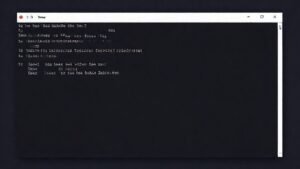Unlocking Quantum Entanglement: Spooky Action at a Distance
- THE MAG POST

- Aug 11
- 12 min read

Exploring quantum entanglement reveals a fascinating world where particles are interconnected, regardless of distance. This concept challenges our classical understanding of physics, suggesting that the properties of entangled particles are intrinsically linked. Imagine two coins flipped far apart, yet always landing on opposite sides—that's akin to quantum entanglement. We'll unravel the mysteries of this phenomenon, from its theoretical underpinnings to its potential applications. Understanding quantum entanglement not only expands our knowledge but also opens doors to revolutionary technologies.
Embarking on the journey of understanding quantum entanglement opens doors to a realm where the conventional rules of physics take a backseat. This phenomenon, a cornerstone of quantum mechanics, challenges our everyday intuition about how the universe operates. Quantum entanglement describes a situation where two or more particles become linked in such a way that they share the same fate, no matter how far apart they are. Measuring the properties of one particle instantaneously influences the properties of the other, a concept that Einstein famously termed "spooky action at a distance." As we delve deeper, we'll uncover the profound implications of quantum entanglement, from its theoretical underpinnings to its potential applications in cutting-edge technologies.
Unveiling the Essence of Quantum Entanglement
At its core, quantum entanglement involves a peculiar correlation between quantum particles. Unlike classical correlations, where objects have definite properties regardless of measurement, entangled particles exist in a state of superposition. This means their properties, such as spin or polarization, are undefined until measured. The act of measurement forces one particle to "choose" a definite state, and instantaneously, the other entangled particle adopts a corresponding state, even if separated by vast distances. This interconnectedness isn't due to any physical signal traveling between the particles; instead, it's an intrinsic property of their shared quantum state. The mathematical description of quantum entanglement relies on the concept of entangled wave functions, which capture the non-separable nature of the particles' states. This is what sets quantum entanglement apart from classical physics.
To truly grasp quantum entanglement, one must understand the concept of superposition. Superposition is the ability of a quantum system to exist in multiple states simultaneously. For instance, an electron's spin can be both "up" and "down" at the same time until measured. When two particles are entangled, their superpositions become intertwined. This means that the composite system exists in a superposition of correlated states. Mathematically, this is represented by a wave function that cannot be factored into separate wave functions for each particle. The measurement of one particle collapses the superposition, forcing both particles into definite, correlated states. This collapse happens instantaneously, regardless of the distance separating the particles, which is a direct consequence of quantum entanglement. This instantaneous correlation is what baffled Einstein and continues to intrigue physicists today.
The process of creating quantum entanglement typically involves bringing particles into close proximity and allowing them to interact in a specific way. One common method is spontaneous parametric down-conversion, where a photon is split into two entangled photons with correlated properties. Another approach involves using quantum dots or superconducting circuits to create entangled qubits, the basic units of quantum information. Regardless of the method, the key is to ensure that the particles' quantum states become correlated in a way that cannot be explained by classical physics. Once entangled, the particles maintain their correlation even when physically separated, making them valuable resources for quantum communication and computation. The creation of robust and long-lived quantum entanglement is a central challenge in quantum technology.
Experimental verification of quantum entanglement relies on demonstrating that the correlations between entangled particles violate Bell's inequalities. Bell's inequalities are mathematical constraints that hold true for any classical theory of correlations. Quantum mechanics predicts that entangled particles can exhibit correlations that exceed these limits, providing strong evidence against local realism, the idea that objects have definite properties independent of measurement and that influences cannot travel faster than light. Numerous experiments have confirmed these violations, solidifying the reality of quantum entanglement. These experiments often involve measuring the polarization of entangled photons or the spin of entangled electrons, and comparing the results to the predictions of Bell's inequalities. The consistent violation of these inequalities provides compelling evidence for the non-classical nature of quantum entanglement.
Practical Applications of Quantum Entanglement
The unique properties of quantum entanglement open up a wide array of potential applications in quantum technology. One of the most promising areas is quantum communication, where entangled particles can be used to establish secure communication channels. Quantum key distribution (QKD) protocols leverage quantum entanglement to generate encryption keys that are provably secure against eavesdropping. Any attempt to intercept the key would disturb the entangled state, alerting the communicating parties to the presence of an eavesdropper. This inherent security makes QKD a highly attractive option for protecting sensitive information. Several companies are already developing QKD systems for commercial and government use, and the technology is expected to play a crucial role in future cybersecurity infrastructure. The development of practical quantum entanglement based communication systems is a major focus of current research.
Quantum computing is another area where quantum entanglement plays a crucial role. Quantum computers use qubits, which can exist in a superposition of states, to perform computations that are impossible for classical computers. Quantum entanglement allows qubits to be linked together, creating complex quantum states that enable parallel processing and exponential speedups for certain types of problems. Algorithms like Shor's algorithm for factoring large numbers and Grover's algorithm for searching unsorted databases rely heavily on quantum entanglement to achieve their speedups. While quantum computers are still in their early stages of development, they hold the potential to revolutionize fields like drug discovery, materials science, and financial modeling. The ability to create and control large numbers of entangled qubits is a key challenge in building practical quantum computers.
Beyond communication and computing, quantum entanglement also has potential applications in quantum sensing and metrology. Entangled particles can be used to create highly sensitive sensors that can measure physical quantities like magnetic fields, gravitational waves, and time with unprecedented accuracy. These sensors could have applications in a variety of fields, including medical imaging, environmental monitoring, and fundamental physics research. For example, entangled photons can be used to create quantum-enhanced microscopes that can image biological samples with reduced noise and increased resolution. The development of quantum entanglement based sensors is an active area of research, with the potential to push the boundaries of measurement precision.
The development of quantum entanglement based technologies faces several challenges. One of the biggest hurdles is maintaining the fragile entangled state in the face of environmental noise. Decoherence, the loss of quantum coherence due to interactions with the environment, can destroy the quantum entanglement and render the particles useless for quantum applications. Researchers are exploring various techniques to mitigate decoherence, including using error-correcting codes, isolating the particles from the environment, and using materials with long coherence times. Another challenge is scaling up quantum entanglement based systems to create large numbers of entangled particles. This requires precise control over the particles and their interactions, as well as efficient methods for creating and distributing quantum entanglement.
Despite these challenges, the progress in quantum entanglement research has been remarkable in recent years. Scientists have demonstrated quantum entanglement over increasingly long distances, created entangled states with a growing number of particles, and developed new techniques for controlling and manipulating quantum entanglement. As quantum technology continues to mature, we can expect to see more and more real-world applications of quantum entanglement emerge. From secure communication networks to powerful quantum computers and ultra-sensitive sensors, quantum entanglement promises to transform the way we live and interact with the world. The ongoing research and development efforts in quantum entanglement are paving the way for a future where quantum technologies play a central role in our society.
Theoretical Foundations of Quantum Entanglement
The theoretical framework of quantum entanglement is rooted in the principles of quantum mechanics, which describe the behavior of matter and energy at the atomic and subatomic levels. Unlike classical physics, which assumes that objects have definite properties regardless of measurement, quantum mechanics introduces the concept of superposition, where particles can exist in multiple states simultaneously. Quantum entanglement arises when two or more particles become correlated in such a way that their fates are intertwined, regardless of the distance separating them. This correlation is not due to any physical connection or signal traveling between the particles; instead, it's an intrinsic property of their shared quantum state. The mathematical description of quantum entanglement relies on the concept of entangled wave functions, which capture the non-separable nature of the particles' states.
One of the key concepts in understanding quantum entanglement is the idea of non-locality. Non-locality refers to the fact that entangled particles can influence each other instantaneously, regardless of the distance between them. This violates the principle of locality, which states that an object is only directly influenced by its immediate surroundings. Einstein famously criticized quantum entanglement as "spooky action at a distance" because it seemed to imply that information could travel faster than light, which would violate the theory of relativity. However, it's important to note that quantum entanglement cannot be used to transmit information faster than light. While the correlation between entangled particles is instantaneous, the outcome of a measurement on one particle is random, and cannot be controlled by the observer. Therefore, quantum entanglement does not violate causality, the principle that cause must precede effect.
The mathematical formalism of quantum entanglement involves the use of entangled wave functions, which describe the joint state of two or more particles. An entangled wave function cannot be factored into separate wave functions for each particle, indicating that the particles are correlated in a non-classical way. For example, consider two entangled photons with correlated polarizations. If one photon is measured to be vertically polarized, the other photon will instantaneously be found to be horizontally polarized, regardless of the distance between them. This correlation is encoded in the entangled wave function, which captures the non-separable nature of the photons' states. The mathematical description of quantum entanglement provides a precise and rigorous framework for understanding this phenomenon.
Bell's theorem, developed by physicist John Stewart Bell in 1964, provides a way to experimentally test the predictions of quantum mechanics regarding quantum entanglement. Bell's theorem introduces a set of inequalities, known as Bell's inequalities, that hold true for any classical theory of correlations. Quantum mechanics predicts that entangled particles can exhibit correlations that violate these inequalities, providing strong evidence against local realism, the idea that objects have definite properties independent of measurement and that influences cannot travel faster than light. Numerous experiments have confirmed these violations, solidifying the reality of quantum entanglement. These experiments typically involve measuring the polarization of entangled photons or the spin of entangled electrons, and comparing the results to the predictions of Bell's inequalities.
The interpretation of quantum entanglement remains a topic of ongoing debate among physicists and philosophers. Some interpretations, such as the Many-Worlds Interpretation, suggest that every quantum measurement causes the universe to split into multiple parallel universes, each corresponding to a different possible outcome. In this view, quantum entanglement is a consequence of the fact that entangled particles exist in multiple universes simultaneously. Other interpretations, such as the Copenhagen Interpretation, emphasize the role of the observer in collapsing the wave function and determining the outcome of a measurement. Regardless of the interpretation, quantum entanglement remains one of the most profound and mysterious phenomena in quantum mechanics, challenging our fundamental understanding of reality.
Future Directions in Quantum Entanglement Research
The field of quantum entanglement research is rapidly evolving, with new discoveries and advancements being made on a regular basis. One of the key areas of focus is the development of more robust and scalable methods for creating and manipulating quantum entanglement. Researchers are exploring new materials, devices, and techniques for generating entangled particles with higher fidelity and longer coherence times. This includes the use of topological materials, which are predicted to be more resistant to decoherence, as well as the development of new quantum control techniques that can precisely manipulate the states of entangled particles. The ability to create and control large numbers of entangled particles is essential for building practical quantum computers and communication systems.
Another important direction in quantum entanglement research is the exploration of new applications for this phenomenon. While quantum communication, computing, and sensing are already well-established areas of research, scientists are also investigating the potential of quantum entanglement for other applications, such as quantum imaging, quantum cryptography, and quantum simulation. Quantum imaging techniques, for example, can use entangled photons to create images with higher resolution and lower noise than classical imaging methods. Quantum cryptography protocols can use quantum entanglement to create encryption keys that are provably secure against eavesdropping. Quantum simulation techniques can use entangled qubits to simulate complex physical systems, such as molecules and materials, with unprecedented accuracy. The exploration of these new applications is driving innovation in quantum entanglement research.
The development of quantum networks, which would allow for the secure transmission of quantum information over long distances, is another major goal of quantum entanglement research. Quantum networks would rely on quantum entanglement to establish secure communication channels between distant parties, enabling applications such as secure quantum key distribution and distributed quantum computing. Building a quantum network requires the ability to create and distribute quantum entanglement over long distances, as well as the development of quantum repeaters, which can amplify and purify entangled states to overcome losses in the communication channel. Researchers are actively working on developing these technologies, with the aim of creating a global quantum network in the future.
The integration of quantum entanglement with other quantum technologies, such as quantum sensors and quantum memories, is also an important area of research. Quantum sensors can use entangled particles to measure physical quantities with unprecedented accuracy, while quantum memories can store and retrieve quantum information for extended periods of time. Combining these technologies with quantum entanglement could lead to the development of new and powerful quantum devices with a wide range of applications. For example, a quantum sensor that uses entangled particles to measure magnetic fields could be combined with a quantum memory to create a highly sensitive magnetometer that can store and process the measured data. The integration of quantum entanglement with other quantum technologies is a key step towards realizing the full potential of quantum mechanics.
As quantum entanglement research continues to advance, it is likely to have a profound impact on our understanding of the universe and our ability to harness the power of quantum mechanics. From secure communication networks to powerful quantum computers and ultra-sensitive sensors, quantum entanglement promises to transform the way we live and interact with the world. The ongoing research and development efforts in quantum entanglement are paving the way for a future where quantum technologies play a central role in our society. The mysteries of quantum entanglement continue to inspire scientists and engineers, driving them to push the boundaries of what is possible and unlock the full potential of this remarkable phenomenon.
Ethical Considerations in Quantum Entanglement Technology
As quantum entanglement technology advances, it's crucial to consider the ethical implications that arise alongside its development. The potential for unprecedented computational power and secure communication also brings concerns about misuse. For example, quantum computers could break existing encryption algorithms, threatening data security and privacy. It's essential to develop new cryptographic methods that are resistant to quantum attacks, and to establish ethical guidelines for the use of quantum technology. The development of quantum entanglement based technologies should be guided by principles of responsibility, transparency, and accountability, to ensure that they are used for the benefit of society.
The potential for quantum entanglement based technologies to be used for military purposes raises significant ethical concerns. Quantum sensors could be used to develop advanced surveillance systems, while quantum computers could be used to break enemy codes or develop new weapons. It's important to have international agreements and regulations in place to prevent the misuse of quantum technology for military purposes, and to ensure that it is used in a way that promotes peace and security. The ethical implications of quantum entanglement in military applications must be carefully considered to avoid escalating conflicts and undermining global stability.
The development of quantum entanglement based technologies could also have implications for employment and the economy. Quantum computers could automate tasks that are currently performed by humans, leading to job displacement in certain industries. It's important to invest in education and training programs to prepare workers for the changing job market, and to ensure that the benefits of quantum technology are shared equitably across society. The economic impact of quantum entanglement should be managed in a way that promotes inclusive growth and reduces inequality.
The use of quantum entanglement in medical applications, such as quantum imaging and quantum sensing, raises ethical questions about patient privacy and data security. Quantum sensors could be used to collect sensitive medical information about individuals, which could be vulnerable to hacking or misuse. It's important to have strong data protection measures in place to safeguard patient privacy, and to ensure that medical data is used responsibly and ethically. The ethical implications of quantum entanglement in healthcare must be carefully considered to protect patient rights and promote trust in the medical system.
Public engagement and education are essential for ensuring that quantum entanglement technology is developed and used in a responsible and ethical manner. It's important to inform the public about the potential benefits and risks of quantum technology, and to involve them in discussions about its ethical implications. This can help to build trust in quantum technology and to ensure that it is used in a way that reflects the values and priorities of society. The future of quantum entanglement depends on our ability to address these ethical challenges and to harness the power of quantum mechanics for the benefit of all.
From our network :






















































Comments